This image shows a top-down view of asteroid Bennu, with a portion of the asteroid’s equatorial ridge and northern hemisphere illuminated. It was taken by the PolyCam camera on NASA’s OSIRIS-REx spacecraft on March 4, from a distance of about 186 miles (300 km). The spacecraft’s cameras are pointed directly at Bennu’s north pole. Two large equatorial craters are visible on the asteroid’s edge (center and center left). The image was obtained during the mission’s Post-TAG Operations phase, as the spacecraft slowly approaches Bennu in preparation for a final observational flyby on April 7.
- Date Taken: March 4, 2021
- Instrument Used: OCAMS (PolyCam)
This image shows four views of asteroid Bennu along with a corresponding global mosaic. The images were taken on Dec. 2, 2018, by the OSIRIS-REx spacecraft’s PolyCam camera.
- Instrument Used: OCAMS (PolyCam)
- Historical Date: December 2, 2018
- Historical Date: January 19, 2019
This image shows a region near asteroid Bennu’s north pole on the terminator line between the asteroid’s day and night sides. The OSIRIS-REx spacecraft’s MapCam camera obtained the image on Feb. 20, 2019 while in orbit around the asteroid from a distance of 1.1 miles (1.8 km). At this distance, each pixel covers approximately 4.5 inches (12 cm) of Bennu’s surface. The largest boulder, located slightly left of the center, measures around 52 feet (16 meters) across, which, for scale, is the length of the trailer on a semi-truck.
During the mission’s orbital phase, OSIRIS-REx circles the asteroid near Bennu’s terminator line. While this positioning helps maintain the spacecraft in a stable orbit, the half-light/half-dark view of the asteroid creates challenging conditions for science imaging.
- Historical Date: February 20, 2019
OSIRIS-REx used its NavCam 1 camera to capture this image of three familiar planetary bodies: asteroid Bennu, Earth, and the moon.
Despite the spacecraft’s distance from home about 71 million miles (114 million kilometers) Earth and the Moon are visible in the lower left due to the long exposure time used for this image (five seconds).
The spacecraft’s range to Bennu is only about 27 miles (43 kilometers), so the asteroid appears highly overexposed in the upper right. The head of the constellation Hydra is also visible in the lower right portion of the image.
NavCam 1 is a black-and-white imager that is one of three cameras comprising TAGCAMS (the Touch-and-Go Camera System), which is part of OSIRIS-REx’s guidance, navigation, and control system. TAGCAMS was designed, built and tested by Malin Space Science Systems; Lockheed Martin Space integrated TAGCAMS to the OSIRIS-REx spacecraft and operates TAGCAMS.
- Historical Date: December 19, 2018
This series of MapCam images was taken over the course of about four hours and 19 minutes on Dec. 4, 2018, as OSIRIS-REx made its first pass over Bennu’s north pole. The images were captured as the spacecraft was inbound toward Bennu, shortly before its closest approach of the asteroid’s pole. As the asteroid rotates and grows larger in the field of view, the range to the center of Bennu shrinks from about 7.1 to 5.8 miles (11.4 to 9.3 km).
This first pass was one of five flyovers of Bennu’s poles and equator that OSIRIS-REx conducted during its Preliminary Survey of the asteroid.
- Historical Date: December 4, 2018
NASA’s OSIRIS-REx spacecraft arrived at asteroid Bennu on Dec. 3, 2018. During the month of December, the spacecraft preformed a preliminary survey of Bennu, conducting three flyovers of the asteroid’s north pole and one each of its equator and south pole. The data gathered during these flybys allowed the mission team to more precisely estimate Bennu’s mass so that the spacecraft went into orbit around the asteroid on Dec. 31, 2018.
This series of images was captured by NavCam 1, a black-and-white imager that is one of three cameras comprising TAGCAMS (the Touch-and-Go Camera System), which is part of OSIRIS-REx’s guidance, navigation, and control system. TAGCAMS was designed, built and tested by Malin Space Science Systems; Lockheed Martin Space integrated TAGCAMS to the OSIRIS-REx spacecraft and operates TAGCAMS.
- Historical Date: December 31, 2018
This mosaic image of asteroid Bennu is composed of 12 PolyCam images collected on Dec. 2 by the OSIRIS-REx spacecraft from a range of 15 miles (24 kilometers). The image was obtained at a 50° phase angle between the spacecraft, asteroid and the Sun, and in it, Bennu spans approximately 1,500 pixels in the camera’s field of view.
- Instrument Used: OCAMS (PolyCam)
This series of images taken by the OSIRIS-REx spacecraft shows asteroid Bennu in one full rotation from about 50 miles (80 km). The spacecraft’s PolyCam camera obtained the thirty-six 2.2-millisecond frames over a period of four hours and 18 minutes.
This "super-resolution” view of asteroid Bennu was created using eight images obtained by NASA’s OSIRIS-REx spacecraft on Oct. 29, 2018, from a distance of about 205 miles (330 km).
The spacecraft was moving as it captured the images with the PolyCam camera, and Bennu rotated 1.2 degrees during the nearly one minute that elapsed between the first and the last snapshot. The team used a super-resolution algorithm to combine the eight images and produce a higher resolution view of the asteroid. Bennu occupies about 100 pixels and is oriented with its north pole at the top of the image.
Bennu and other asteroids represent building blocks of our solar system’s rocky planets.
Scientists think Bennu is part of a larger body that broke apart. This artist’s concept shows that event.
This artist’s concept shows the OSIRIS-REx mission returning a sample from Bennu to Earth.
NASA’s OSIRIS-REx mission will be approaching Bennu.
This artist’s concept shows the OSIRIS-REx spacecraft collecting a sample from Bennu.


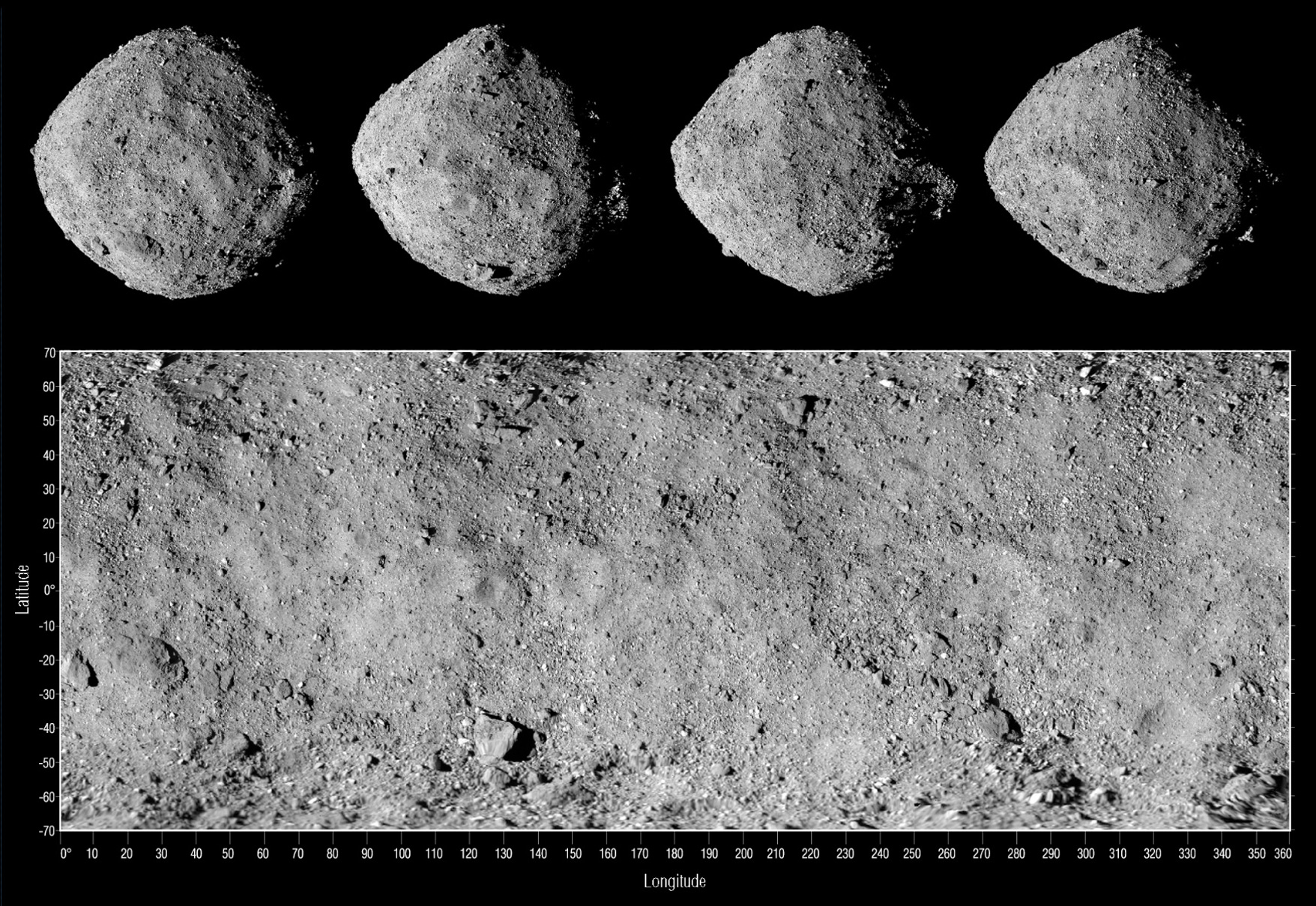
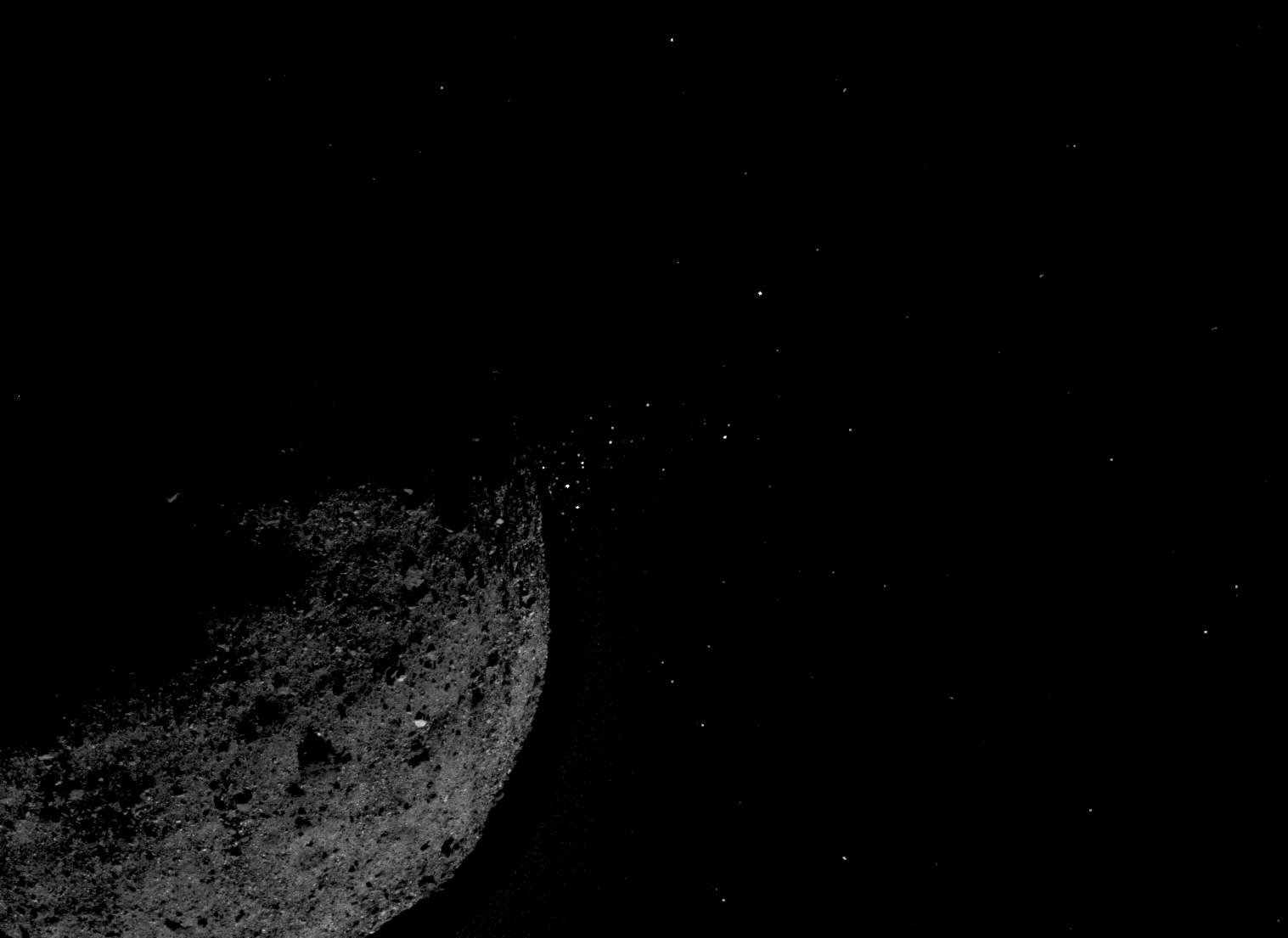
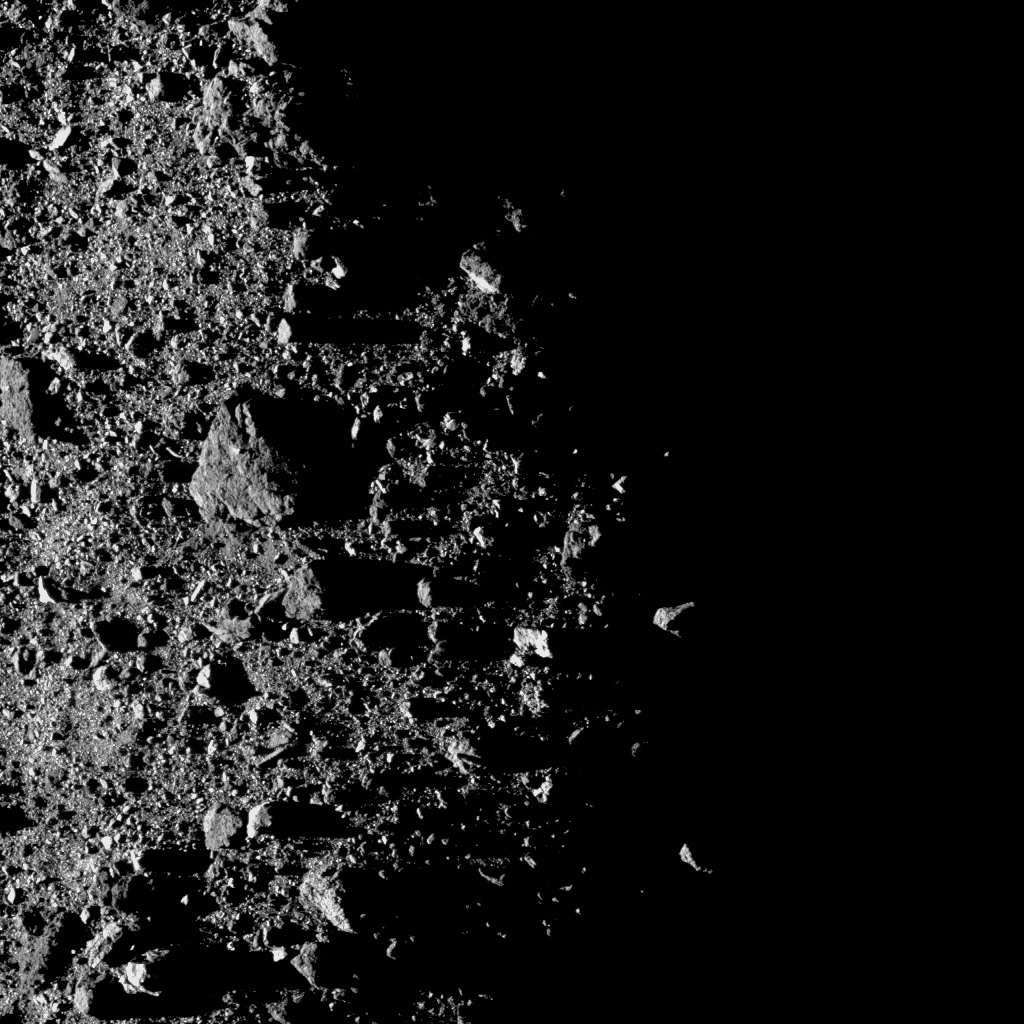
.jpeg)
.gif)


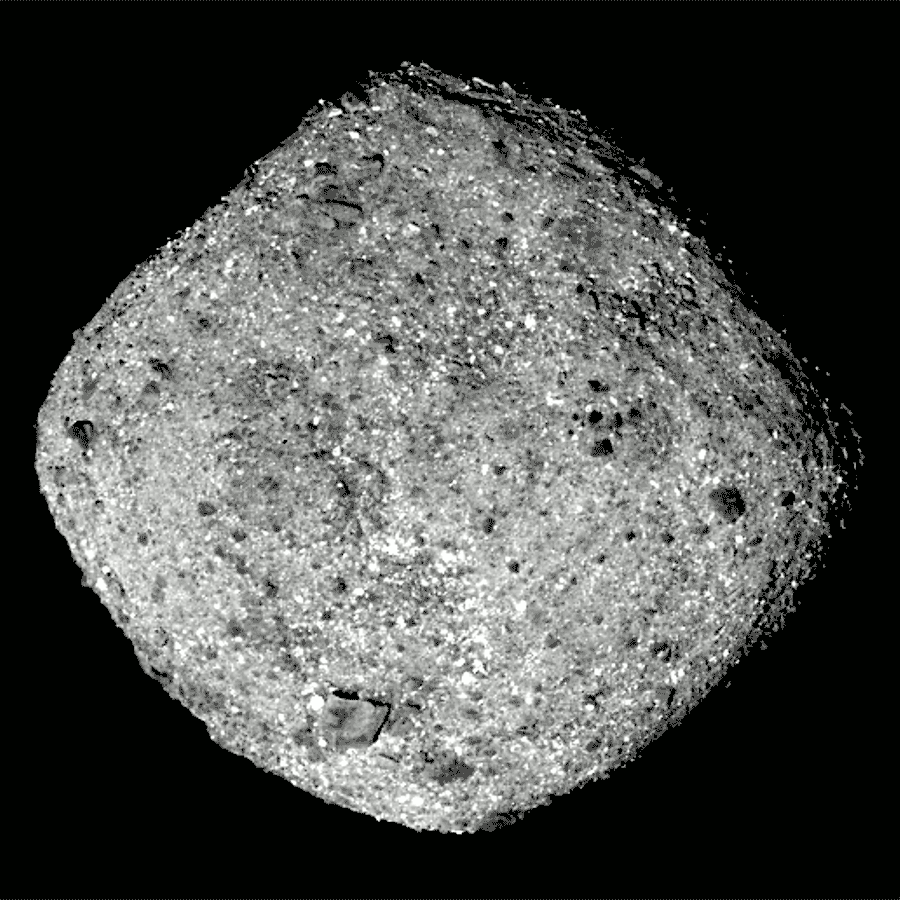
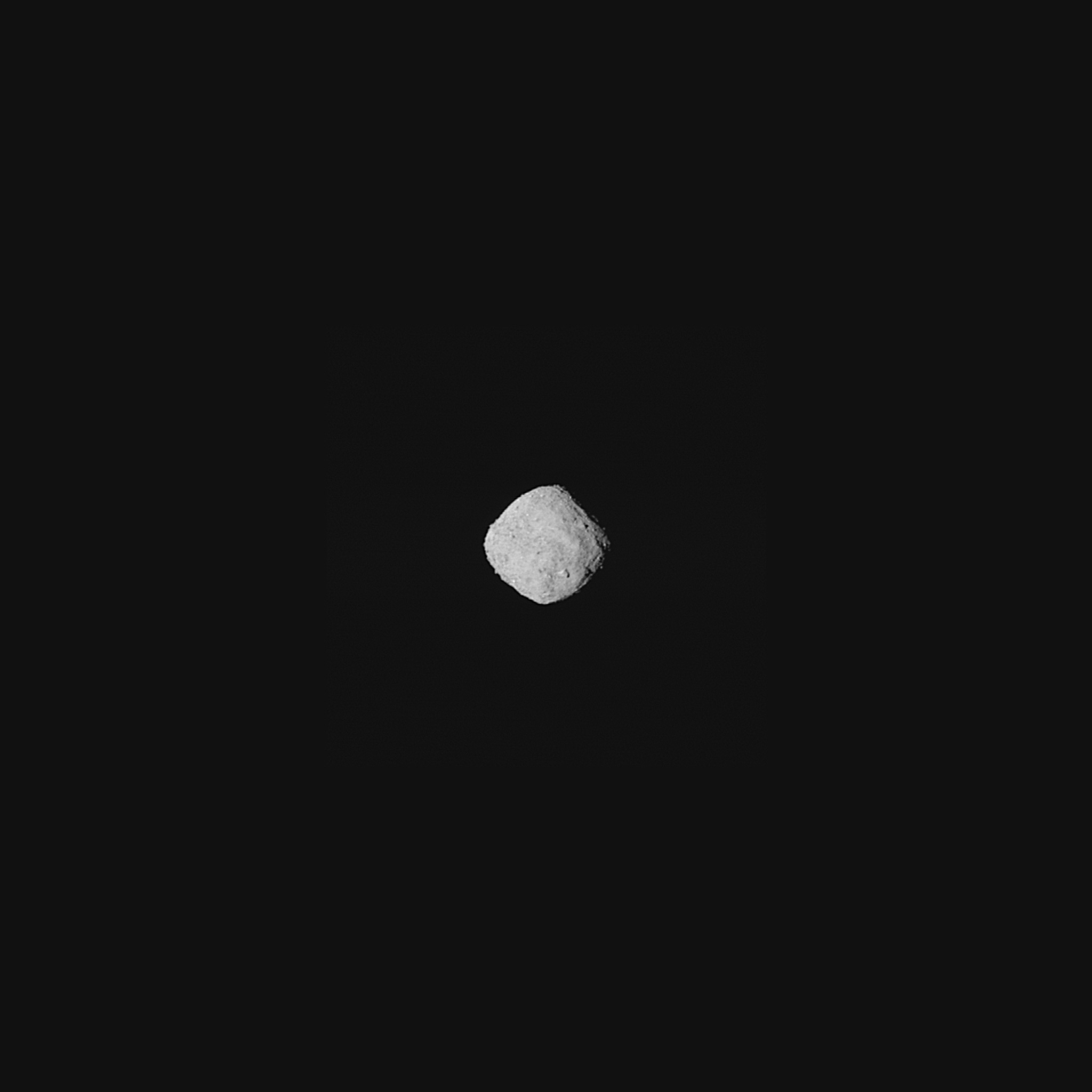
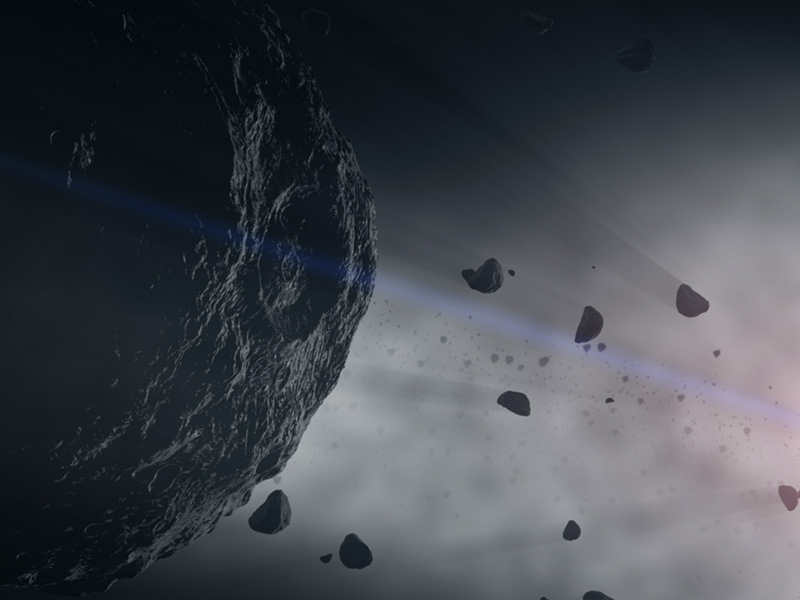
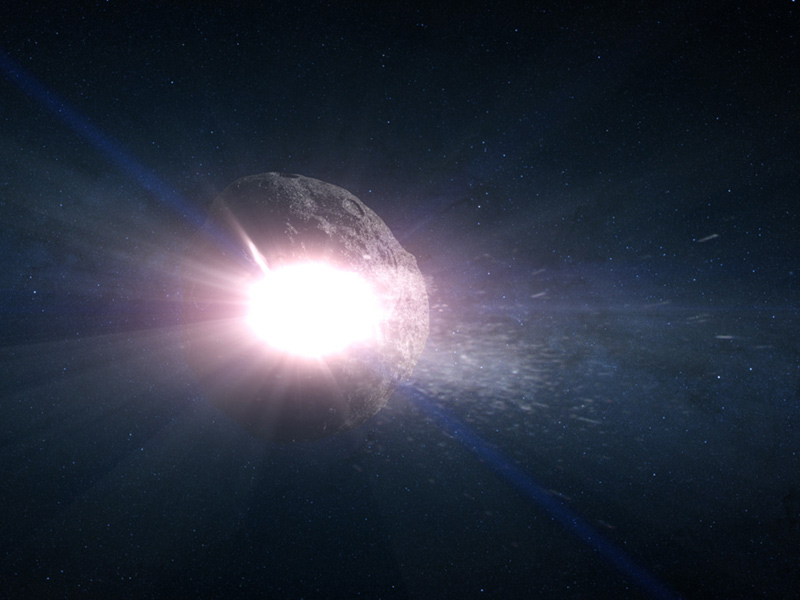
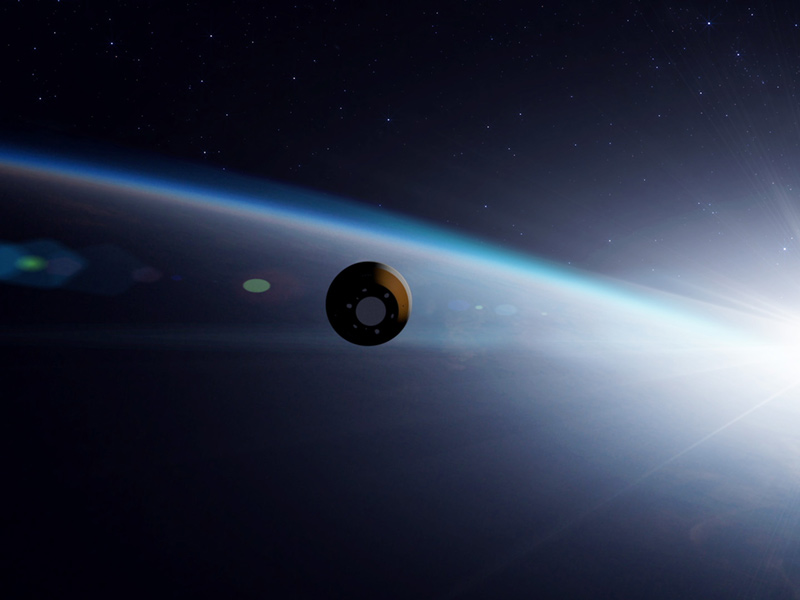
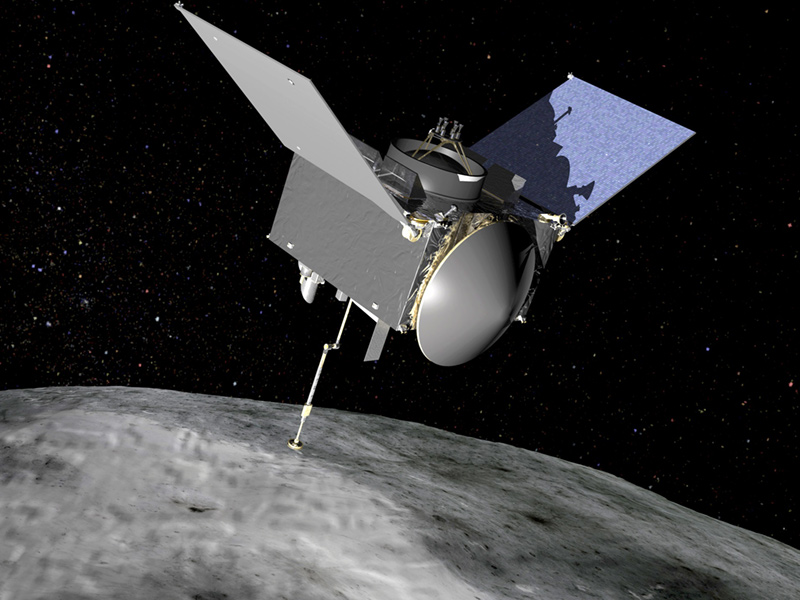
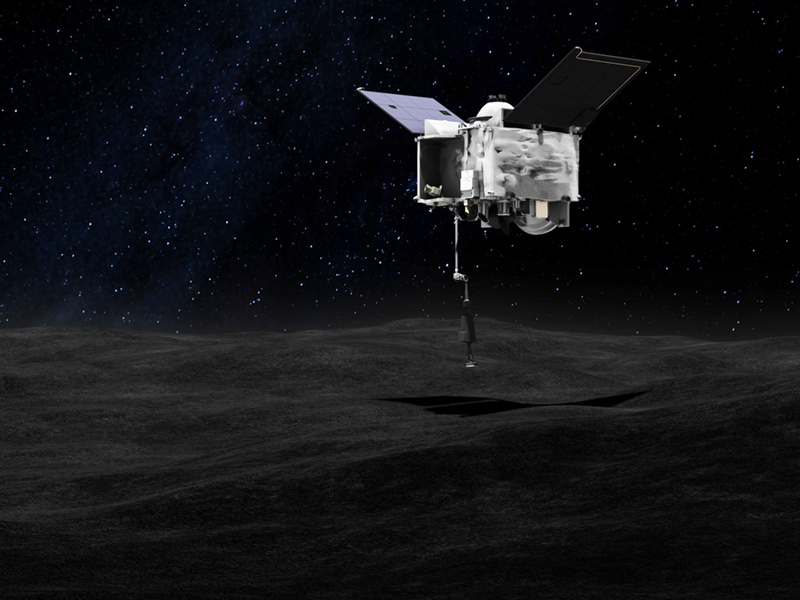


0 Comments